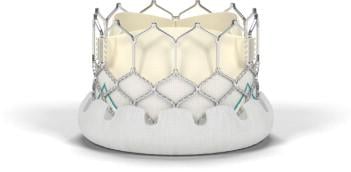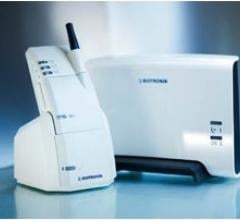The Gagnon Cardiovascular Institute at Morristown Medical Center adopted a minimally invasive medical device to treat patients with severe aortic stenosis who are too ill or frail to have their aortic valves replaced trough traditional open-heart surgery.
January 28, 2014 — The U.S. Food and Drug Administration (FDA) approved W. L. Gore & Associates’ 25 cm Gore Viabahn Endoprosthesis with Heparin Bioactive Surface for the treatment of symptomatic peripheral arterial disease (PAD) lesions in the Superficial Femoral Artery (SFA). The 25 cm endoprosthesis is designed to cover long-segment lesions in the SFA, potentially reducing the need for multiple devices.
ReCor Medical advanced its Paradise System for renal denervation (RDN) for treatment resistant hypertension (HTN).
Providing exceptional cardiovascular care for patients to achieve the best possible outcomes is the number one goal for ...
The U.S. Food and Drug Administration (FDA) approved Pressure Products Inc.’s SafeSept Needle Free Transseptal Guidewire for use with any introducer system when crossing the interatrial septum. The device assists in transseptal procedures and is designed to create the primary puncture in the interatrial septum providing access from the right to left side of the heart without using a transseptal needle.
AtheroMed, a developer of catheter technologies for treating peripheral artery disease (PAD), received clearance from the U.S. Food and Drug Administration (FDA) to market the Phoenix Atherectomy System, which allows physicians to treat PAD with a low profile atherectomy catheter that continuously removes diseased material as it is debulked and does not require specialized capital equipment.
Experts from the American Society of Echocardiography (ASE), in collaboration with the Society for Cardiovascular Magnetic Resonance (SCMR) and the Society for Pediatric Radiology (SPR), released a guideline, Multimodality Imaging Guidelines for Patients With Repaired Tetralogy of Fallot: A Report from the American Society of Echocardiography Writing Group, to help optimize lifetime management of patients with repaired tetralogy of Fallot (TOF).
Cardiac positron emission tomography (PET) is growing in popularity among cardiologists because it provides the ability ...
A paper in World Heart Federation’s journal Global Heart advocates for the inclusion of ultrasound in medical education programs to fully realize its benefits as early as possible. The review is by J. Christian Fox, professor of clinical emergency medicine and director of instructional ultrasound, University of California Irvine School of Medicine and colleagues.
Claret Medical Inc. received CE marking for the Sentinel Cerebral Protection System (CPS) for embolic protection during transcatheter aortic valve replacement (TAVR).

Edwards Lifesciences Corp. received CE marking for its Edwards Sapien 3 transcatheter aortic valve.
When performing radiofrequency (RF) ablation to treat cardiac arrhythmia, medical professionals must balance the safety ...
Experts presented six-month LEVANT 2 trial results for C. R. Bard Inc.’s Lutonix drug coated balloon (DCB) and provided updates on the ongoing Lutonix Below the Knee (BTK) Clinical Trial at the Leipzig Interventional Course (LINC) in Leipzig, Germany.
Prof. Richard Schilling implanted St. Jude Medical Inc.’s Nanostim retrievable leadless pacemaker at St. Bartholomew’s Hospital, London.
Infraredx Inc.’s TVC Imaging System will be manufactured and distributed in Japan by Nipro Corp. Infraredx intends to commercialize the TVC Imaging System in Japan, China, Korea and other Asia Pacific markets.
Change Healthcare Cardiology Hemodynamics is an integrated hemodynamic monitoring system for monitoring vital signs and ...
BioLeonhardt, a Leonhardt Ventures company based in Los Angeles, unveiled its implantable stem cell pump at the 9th Annual Cell Therapy for Cardiovascular Disease meeting at Columbia University, Jan. 23, 2014.
An Effectiveness and Cost of ICD Follow-Up Schedule with Telecardiology (ECOST) study indicated the Biotronik Home Monitoring may reduce follow-up costs in patients with implantable defibrillators (ICDs).
The Society for Healthcare Epidemiology of America (SHEA), an infection control organization, issued voluntary recommendations regarding physician attire in Infection Control and Hospital Epidemiology. White coats, neckties, and wrist watches can become contaminated and may potentially serve as vehicles to carry germs from one patient to another.


 January 28, 2014
January 28, 2014















